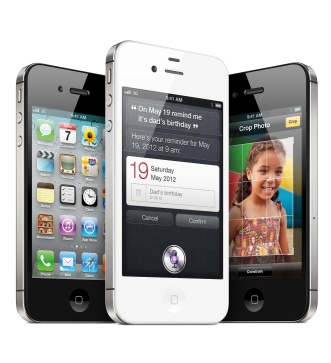It’s just a matter of time before we see OLED displays in iPads, iPods and iPhones. And almost certainly in Macs in the not-too-distant future.
OLEDs (or organic light emitting diode displays) require less power than conventional displays and can be slimmer (around 0.2-0.3mm or about 8 thousandths of an inch, compared to LCDs, which are typically at least 10 times thicker) and lighter — so you can see how they would appeal to Steve Jobs. They also offer better contrast, better viewing angles, greater brightness, and almost instant response times — all of which would be especially appealing in iPads and laptops.
The drawback is price. Right now OLED displays are significantly more costly than LED screens. The 9.7-inch LCD panel for iPad costs about US$60-70, but the price of a 9.7-inch OLED panel is about US$500. However, the price gap isn’t expected to narrow appreciably for another couple of years — or longer.
But it will, in time. Eventually, OLED screens and solid state drives will be commonplace on Macs, replacing LCD screens and hard disk drives.
In fact, when your Mac finally gets a 3D display, it could well be an OLED screen. According to a “Suite 101” article (http://computer-monitors.suite101.com/article.cfm/oled_monitors_and_3d_display_tech), the idea is to start with a traditional LCD monitor, over which are sandwiched additional layers of transparent OLED films. When used together, it should be possible to give the perception of depth without the need for 3D glasses or laser optics.
The slimness and lightness of OLEDs could lead to some very interesting Mac designs. Check out this OLED-touchscreen slider concept computer (http://www.mobilewhack.com/oled-touchscreen-slider-concept-computer/) and imagine it running the Mac OS (or iOS — or a combination of the two).
OLED monitors use ordinary glass as a substrate on which individual pixels are sprayed or evaporated. However, flexible or even transparent OLED displays are in the works with other, more flexible and transparent polymers.
So it’s possible that future Macs will have screens that can be folded and unfolded for transport. Or, heck, perhaps the entire Mac will be able to be folded like a tablecloth. Last month Sony previewed its new conceptual, solar powered Nextep Computer Bracelet that features a flexible organic light emitting diode screen (OLED), holographical projection, pull-out keyboard panels and you can access to social network with a single touch.The Nextep can be laid flat like a digital tablet. Estimated time of arrival: 2020. So, who knows? In 10 years you might wear your Mac on your wrist.
Another good thing about OLEDs is that they’re expected to be less expensive to manufacture than conventional displays. However, companies have invested heavily in LCD manufacturing plants over the years, and they’re not going to switch to OLEDs overnight.
I’ll continue these thoughts tomorrow. What would you like to see in a Mac? Write me at dsellers@macsimumnews.com .
— Dennis Sellers


